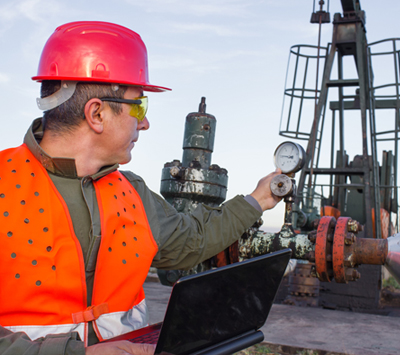The E&P company has been a major player in energy exploration and production for more than thirty years. Despite market volatility, the company has thrived by seizing opportunities and being early adopters of technologies that have transformed oil and gas exploration and production. Over the life of the company, this has led to projects from West Virginia and Texas to New Zealand.
Business Challenge: Accurately Position Wells to Increased Production
At the time, much of the company’s focus was on its 75,000-acre holdings in the Eagle Ford Formation, the 50-mile wide, 400- mile long swath of oil and gas-rich shale that runs under much of south Texas. Eagle Ford’s high carbonate content makes it highly suitable for hydraulic fracturing and one of the most actively explored areas in the United States. From January through November of 2012, the Eagle Ford yielded 964 million cubic feet of natural gas per day, and oil production of nearly 339,000 barrels per day (according to the Railroad Commission of Texas).
While the potential rewards in Eagle Ford are great, so are the technological and economic challenges. First, the most effective way to reach the reserves is through horizontal wells that can cost three times as much as traditional vertical drilling. Second, the wells must be fractured to make a reservoir with permeability. Because of this increased investment, accurately targeting the reservoirs is even more critical.
Achieving that accuracy, however, has traditionally been hampered by several obstacles:
- Key personnel used different methods and units of measure, so coordination between them could be challenging. (Geophysicists typically work with seismic data that is recorded in time, but drillers work in depth.)
- Calculations to process and convert seismic data from time to depth, as well as execute the required quality control, would be highly time consuming. Additionally, the sheer number of calculations critical to proper planning and well accuracy would increase the risk of human error.
Kingdom’s Dynamic Depth Conversion has been invaluable. The corrections we can make on-site… enable us to continually refine the model as we go. And that makes us much more effective at staying in the zone.
Bruce Moriarty
Geophysical Advisor
Dynamic Depth Conversion: Innovation to target the sweet spot
To help improve the efficiency of its exploration and drilling operations, the E&P company relied on Kingdom geoscience software. Kingdom automates many of the key elements that previously presented the biggest challenges to a well’s success.
Bruce Moriarty, a geophysical advisor whose job included bringing the newest and most innovative technology to the company’s asset teams, quickly realized the benefits of Kingdom to improve operational efficiency and profitability.
“When I saw how effective the new features are, I pushed to have it implemented on as many projects as possible,” Moriarty said. He added, “It has enabled us not only to do things faster, but to improve our decision making so we do them better.”
In a recent study, the company proved that wells planned with the new technology stayed in-zone significantly more than wells using conventional approaches – and were more profitable.
The feature that had the biggest impact on operations is Kingdom’s Dynamic Depth Conversion (DDC), which builds and maintains a virtual velocity model and automatically converts seismic results from time to depth. That means engineers and geologists at the well site leverage the value of seismic data to optimally guide the placement of the well. If geosteering adjustments are needed, the adjustments are guided by ongoing, real-time data acquisition in the field, completed in minutes, not hours.
Better communication yields better results
In addition to making drilling more accurate, Kingdom also improved the ability of key personnel to work together. By integrating seismic information with well data, engineers and geophysicists can coordinate their activities more quickly and efficiently than ever before.
Moriarty pointed out, “Everyone is speaking the same language now, so everyone is on the same page at the same time.”
Lower Risk, Better Production
The predominance of high-risk, high-cost hydraulic fracturing and the pressures on producers to pull the absolute maximum production from resources is higher than ever before. This led Moriarty to comment, “One thing we’ve learned is that to make shales profitable, you must work hard to earn absolutely every barrel possible.”
Exploration and production in Eagle Ford and in fields around the world will continue to be high-stakes, high-pressure propositions. But no matter where they take place, the tools and functionality provided by Kingdom improve operational efficiency, productivity and the odds, as well as the actual frequency of hitting the sweet spot.
